This route passes through the most impressive landscapes of the area of Sfakia, and offers many alternatives for hiking expeditions. It passes by several historical sites and other locations that are worth visiting and ends up at the area of Apokoronas.
It is essentially one of the basic routes for those who wish to explore the surrounding areas. In order to make the best of this complex route, which has numerous points of interest and it is characterized by a fascinating geomorphology, it is best to split the route into several parts.
Frangokastelo - Chora Sfakion - Anopoli - Aradena
We begin our drive at Frangokastelo, a Venetian fortress of the 14th century which witnessed scenes of bloodshed during a battle in 1828 between the Cretan guerrilla leaders who had taken refuge here and the Turks. During this battle, the towers of the castle were destroyed.
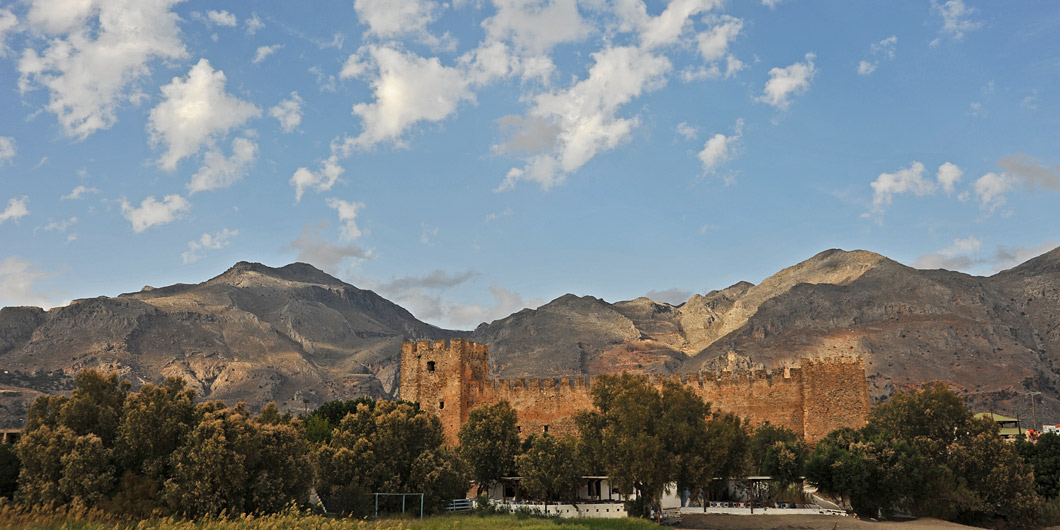
Frangokastelo is also known for the local legend of the “Drosoulites”, a mirage phenomenon which occurs under very specific climatic conditions.
Leaving Frangokastelo (1) we continue westwards towards Chora Sfakion (2), with the characteristic traditional houses that are perched high on the slope of the Lefka Ori.
Chora Sfakion can serve as a starting point for the exploration of the whole area of Sfakia. It is linked by boat with the picturesque Loutro, Gavdos, Agia Roumeli and Paleochora.
Those who enjoy hiking can try the E4 path; some of the most beautiful of its routes cross this particular region. There are also several beautiful, unspoilt beaches in the surrounding area.
From Chora Sfakion we take the road which snakes up the bare, rugged mountain slope. After a few kilometres we find ourselves at quite a high altitude, enjoying the view to Chóra Sfakion, to the nearby coastline and to Gavdos, from above.
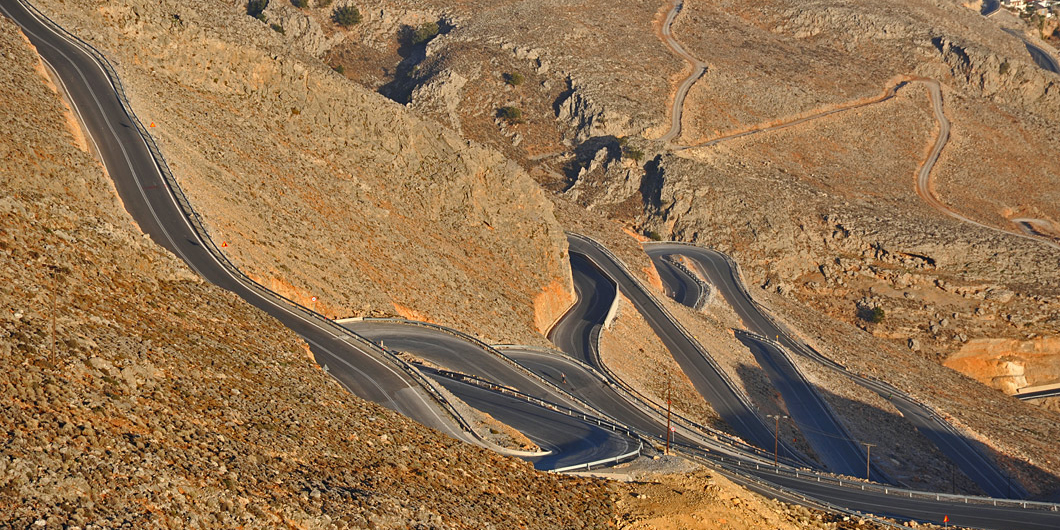
The landscape then changes; pine and rock prevail, until we reach the Anopoli plateau (3). We can make a stop at Anopoli, which is built at the site of ancient Anopoli, one of the autonomous ancient towns of Crete with their own currency. Anópoli is also the birthplace of Ioannis Daskalogiannis, who instigated the Revolution of 1770. A bust depicting the Cretan hero can be seen at the village square.
A stop to enjoy Sfakian pies as well as the lovely view from the hill of Agia Ekaterini, where part of the Cyclopean walls of the ancient town survive today, is highly recommended.
The view stretches all the way down to the bay of Loutro, which was the port of ancient Anopoli.
Continuing to the west, we find ourselves at the lip of the gorge of Aràdena The walk down the gorge requires 2,5-3 hours and ends up at the secluded beach of Marmara. From this point, there is the possibility to continue the hike to Chora Sfakion (1,5 hour) or to Loutro (approximately 1 hour).
Moreover, the picturesque fishing village of Loutro can be a holiday destination in its own right, for those who seek tranquility and relaxation.
Loutró is not reached by any roads; it is only connected by boat with Sfakia, Agia Roumeli, Paleóchora and Sougia, while one can get to the nearby unspoilt beaches by boat.
An iron Bailey bridge crosses over the imposing gorge and offers the possibility for a bungee jump, from a height of 138 metres.
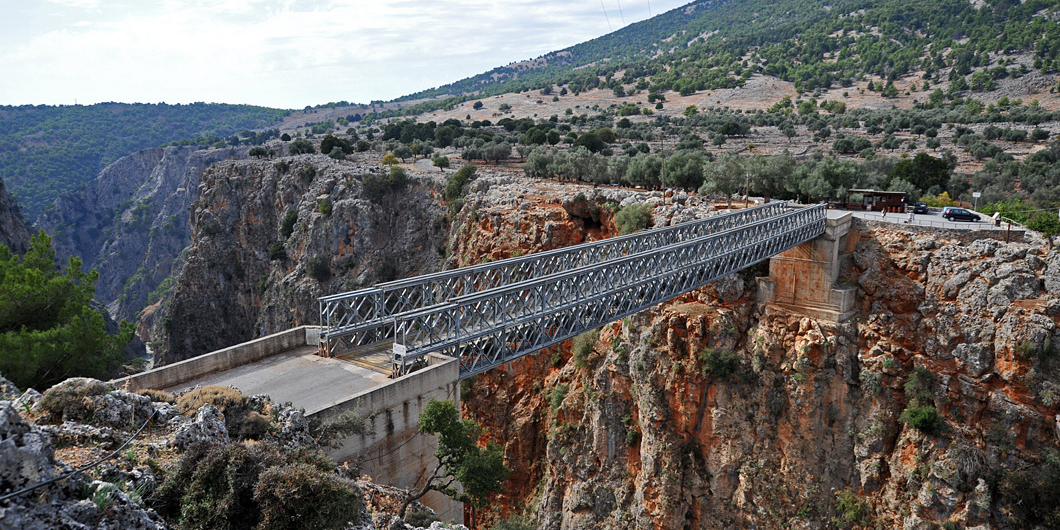
We cross the bridge in order to visit the Byzantine church of Michael the Archangel (Mikhaίl Arkhàngelos), protector of Sfakia, and the deserted village of Aradena. Continuing our drive further, we reach the little settlement of Ai Giannis, which is located on a beautiful wild slope of the Lefka Ori.
We then take the road back to Chora Sfakion. From here, we can also follow the second part of the route, which passes through the Sfakia area and ends up in the Apokoronas region.
Chora Sfakion - Askifou Plateau - Vamos
Leaving Chóra Sfakίon we take the road eastwards, climbing until a junction,the right-hand side branch of which leads to Frangokastelo; we do not go this way, but continue straight on and follow the main road northwards, towards Chania. As we ascend an increasingly precipitous mountain slope, a magnificent view that reaches all the way to Gàvdos opens up ahead of us. Gradually, the bare landscape becomes greener, as we drive alongside the imposing gorge of Imbros.
This is one of the deepest and narrowest gorges of Crete, with a footpath approximately 5 km long. For those who wish to walk through the gorge, the entrance point is a little south of Imbros village. The hike, which requires approximately 3 hours and is fairly easy, ends up at the village of Komitades.
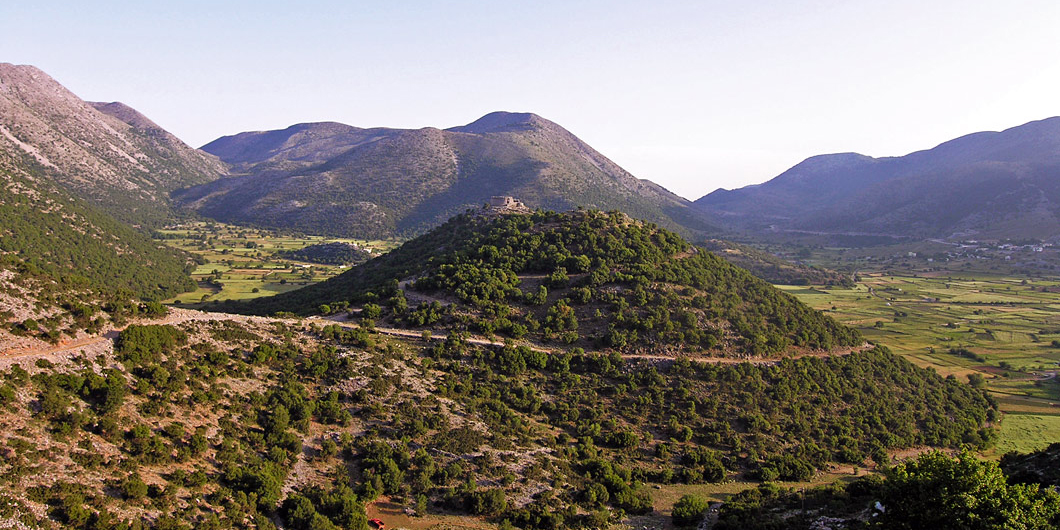
We pass through the village of Imbros, on a small plateau. The uphill route continues, until the Askifou plateau (4) opens up ahead of us, at an altitude of 726 metres. The plateau has been inhabited and cultivated for a very long time.
Local products of excellent quality are made here. One can also taste the famous Sfakian pies in the traditional tavernas of Askifou.
During the Turkish Occupation, in the area of the plateau bloody conflicts took place between the Cretan revolutionaries and the Turks. It is here that the General Assembly of the Cretans (which proclaimed the union with Greece) was held, during the unsuccessful revolt of 1866.
Next, we descend the northern slopes of the Lefka Ori, towards Vamos, the historical town of Apokoronas. Before we reach Vàmos we make a stop at the village of Vrisses (5), which is built in a verdant location. Waters here are abundant, since a river and several streams flow through the village and there are quite a few tavernas where one can sit under the shade of plane trees.
After Vrisses we cross a beautiful, hilly agricultural landscape, until we reach Vamos (6), which is one of the most important agrotourism centres of Crete. Traditional architecture prevails here.
Setting off at Vamos we can visit the Apokoronas area, where the landscapes are a lot gentler than in Sfakia.
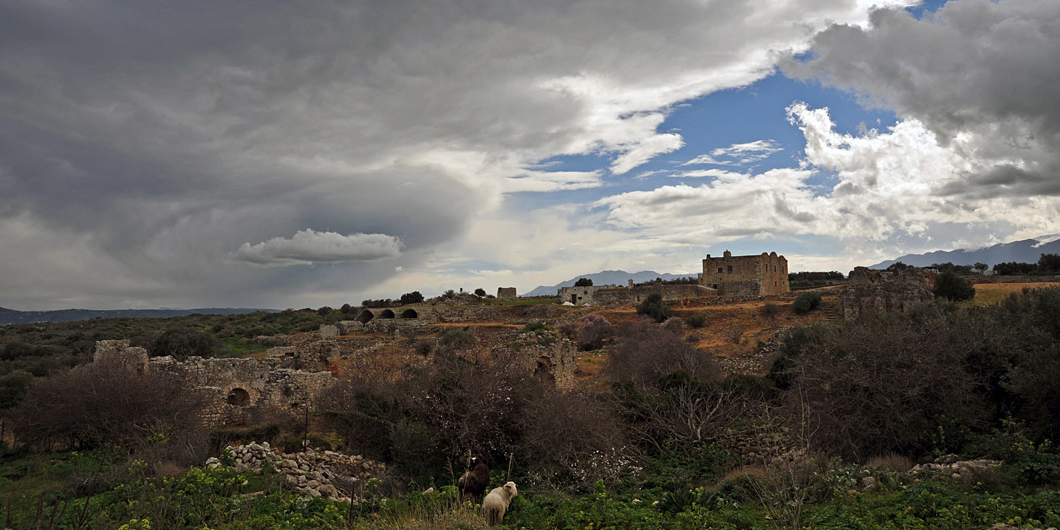
The traditional villages Gavalochori, Fres, Vafés and the valley of Armeni are worth visiting. In this scenic valley, several small traditional settlements are to be found. In Apokoronas one can also visit the only natural lake of Crete, the Kournas lake, as well as the touristic coastal settlement of Georgioupoli and ancient Aptera, one of the most important city-states of Western Crete.























